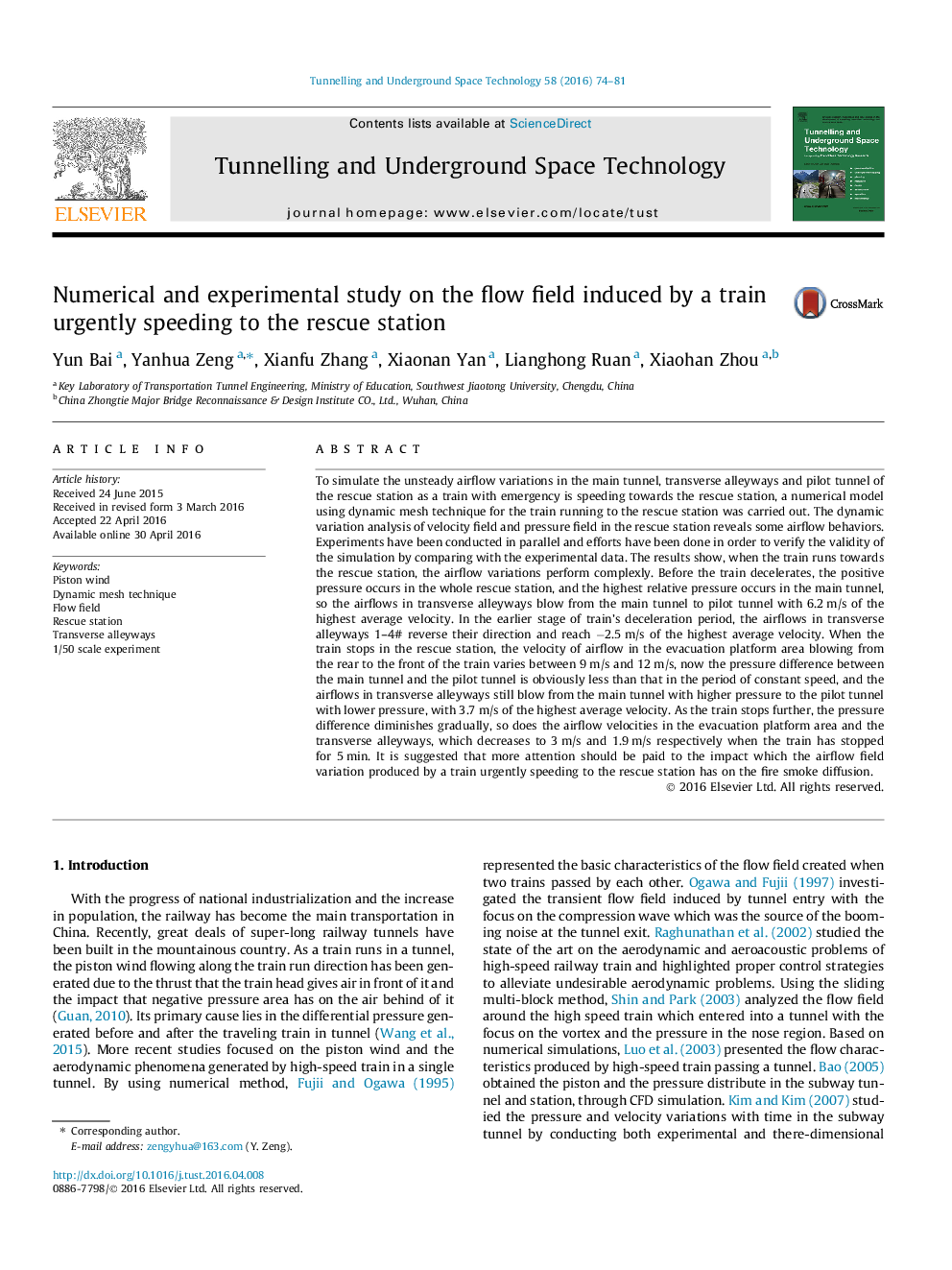| Article ID | Journal | Published Year | Pages | File Type |
|---|---|---|---|---|
| 311809 | Tunnelling and Underground Space Technology | 2016 | 8 Pages |
•The train-induced airflow in the rescue station is simulated.•The 1/50 scale experiment was carried out.•The airflows in transverse alleyways vary complexly.•Qualitative behaviors of the numerical results agree with the experimental data.
To simulate the unsteady airflow variations in the main tunnel, transverse alleyways and pilot tunnel of the rescue station as a train with emergency is speeding towards the rescue station, a numerical model using dynamic mesh technique for the train running to the rescue station was carried out. The dynamic variation analysis of velocity field and pressure field in the rescue station reveals some airflow behaviors. Experiments have been conducted in parallel and efforts have been done in order to verify the validity of the simulation by comparing with the experimental data. The results show, when the train runs towards the rescue station, the airflow variations perform complexly. Before the train decelerates, the positive pressure occurs in the whole rescue station, and the highest relative pressure occurs in the main tunnel, so the airflows in transverse alleyways blow from the main tunnel to pilot tunnel with 6.2 m/s of the highest average velocity. In the earlier stage of train’s deceleration period, the airflows in transverse alleyways 1–4# reverse their direction and reach −2.5 m/s of the highest average velocity. When the train stops in the rescue station, the velocity of airflow in the evacuation platform area blowing from the rear to the front of the train varies between 9 m/s and 12 m/s, now the pressure difference between the main tunnel and the pilot tunnel is obviously less than that in the period of constant speed, and the airflows in transverse alleyways still blow from the main tunnel with higher pressure to the pilot tunnel with lower pressure, with 3.7 m/s of the highest average velocity. As the train stops further, the pressure difference diminishes gradually, so does the airflow velocities in the evacuation platform area and the transverse alleyways, which decreases to 3 m/s and 1.9 m/s respectively when the train has stopped for 5 min. It is suggested that more attention should be paid to the impact which the airflow field variation produced by a train urgently speeding to the rescue station has on the fire smoke diffusion.
